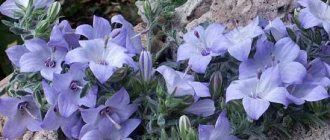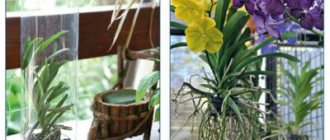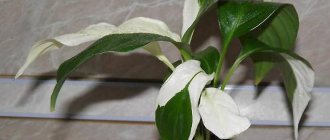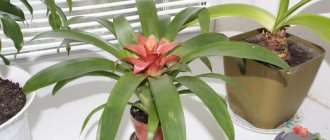Content
- History of the campanula 2 Description of the appearance of the plant 3 Caring for the campanula 3.1 Choosing a place for a pot with a flower 4 Temperature conditions 5 Required humidity in the room 6 Feeding 7 Caring for the flower in the autumn-winter period 8 The process of replanting the campanula 8.1 Methods of propagating the bell 8.2 Cuttings 8.3 Seeds 8.4 Dividing bushes 9 Fighting campanula diseases 9.1 Getting rid of pests
It's nice to have flowering plants in your apartment or garden. They create a pleasant atmosphere. For beginners, you can pay attention to such a flower as campanula..
It is easy to care for and does not require any special hassle or knowledge of floriculture. Due to the shape of the flowers, it is popularly called a bell. It is generally accepted that if campanula with blue and white flowers grows in the house, it will bring family happiness and good luck.
Types and varieties
In addition to Campanula equifolia, which we described at the beginning of the article, the following types of bells are grown in indoor culture:
- Campanula Blauranka is a variety of low-growing Campanula Pozharsky, distinguished by large leaves and flowers of a soft blue hue. The shoots of this plant, suitable for growing both in an apartment and in a garden, reach a height of only 20 cm;
- Campanula terry is a hybrid variety that appeared by crossing Carpathian bells and spoon-leaved bells and is a small bush on which double white, blue and purple flowers open simultaneously and in large quantities. The flexible shoots of this plant are difficult to see due to the abundance of carved leaves. Campanula terry is as capricious as it is attractive, and requires a lot of attention and special conditions of detention;
- Carpathian campanula, or Carpathian bell , is an annual plant with ovate-rounded leaves located in the basal part in the form of a rosette. The flowers of this species are up to 5 cm in diameter, white, blue or purple. Of the garden forms of the Carpathian bell, the most famous are White Star and Alba with white flowers, Blaumeise, Riversleigh and Centon John with blue flowers, Isabel and Celestina with sky-blue flowers and Karpatenkrone with purple.
History of the Campanula flower, photos, varieties
It is difficult to determine the exact time of its appearance. Since ancient times, this flower has been a favorite indoor plant for women. It was also planted in flower beds near the house. The hanging shoots of campanula looked harmonious on the balconies. They were grown in special pots attached to the outside of the balconies.
The plant belongs to the bellflower family. Campanula (lat. Campanula) can be either annual or perennial. It is also found in the wild, for example, in the southern part of the European continent. Many species of Campanula have been cultivated and planted as ornamentals.
The varieties used for growing in the garden are: Alba, Maya, Makrantu, Bruntwood, Superba and Akulis.
Only a few of its species are primarily planted as indoor flowers. Campanula terry and equal-leaved Campanula isophyll are commonly used. Planting and caring for this plant is accessible even to novice gardeners.
Another popular hybrid is “Kent Belle”, which is a small bush with strong branching stems 20-40 cm in height. Unlike other varieties of bells, its flowers look like stars of a dark lilac color; you can see them in the photo above. Blooms all summer.
The indoor flower campanula is also called - bride and groom . The bride is the Campanula equifolia variety Alba with white flowers, and the groom is the Mayi variety with blue flowers. They are often planted in one pot, an example is shown in the photo below. According to popular belief, this decorative flower is considered the best gift for newlyweds, which will help to acquire family happiness and maintain love in a couple.
Indoor campanula in the interior and not only
Bells in indoor culture are not as simple plants as they might seem at first glance. Of course, they remain a luxurious, eye-catching decoration for rooms, but their scope of use is much wider. After all, campanulas are perfect for the role of:
- a spot of color, a bright and catchy accent that emphasizes the palette of the interior;
- a beautifully blooming accent that attracts the eye;
- decorating empty, boring corners that lack thoughtful design and stylish details;
- accent in nostalgic and romantic interiors;
- decoration of balconies and terraces.
It is advisable to display Campanula as a soloist, away from other indoor plants (except for compact decorative foliage crops). She is especially good as a single accent. And the “cleaner” the background for it is, the better. Avoid additional decor, elaborate containers, or an abundance of details - the campanula needs a simple and modest presentation.
Campanula care
Have you decided to get yourself a plant like campanula?
Caring for a flower at home will not be difficult. The purchased campanula flower should be planted in a pot with a large diameter, since its roots grow quite quickly in width. Loose soil is required to ensure free growth of the root system. You can prepare a soil composition by mixing humus, leaf soil and sand in equal proportions.
Choosing a place for a flower pot
Campanula prefers a bright room. But growing in direct sunlight does not suit it. This can lead to gradual wilting, curling of the leaves and drying out.
If the plant does not receive sufficient lighting, the stems stretch and the distance between the leaves increases, which spoils the decorative appearance of the campanula.
The best option is a room with windows facing east. However, it is not recommended to place pots with plants on the windowsill. It is better to install a flower stand near the window opening. This will allow the flower to grow quickly. Soon the entire stand will be decorated with original bells.
Alternatively, you can hang a pot with campanula on the wall near the window.
With a change in the direction of the light flow, the campanula turns its open flowers towards it. It is not recommended to turn the flower in opposite directions, as this may negatively affect its flowering.
Temperature
It is necessary to protect the bells from extreme heat. In summer, you can take it out of the room. If this is not possible, then it is necessary to ensure a constant flow of fresh air. The most acceptable temperature for growing campanula is about 20-22 degrees.
In winter, it needs to be removed away from heating appliances and radiators, and also ensure that the air temperature near the flower does not rise by more than 15-20 degrees.
Required indoor humidity
Unpretentious campanula does not require a special moisture regime. It easily adapts to the usual irrigation regime. It does not require additional spraying or installation of special trays with water.
Spraying is used only in case of elevated temperatures. Abundant watering is required during the activation of growth and appearance of Campanula flowers. The soil is moistened abundantly, but the water should not stagnate.
In autumn, watering is reduced. One watering per week is enough. In winter, the plant requires even less moisture. Watering in the cold season is reduced to once a month.
If you did not have the opportunity to water the campanula in time, then do not worry. In the summer, a flower can survive without watering for up to 2 weeks. At the same time, the leaves and flowers do not dry out. But you shouldn’t experiment, as frequent breaks in moisturizing it can harm the bells.
Feeding
During the growth and flowering of campanula, you need to fertilize the soil in the pot. To do this, you can purchase fertilizers for flowering ornamental plants, for example, “Success” or “Master”. Instructions for use are included with the products. But there is no need to fertilize more often than every 2 weeks.
Varieties of bells for home cultivation
Types of home bells that can be grown at home:
- Carpathian - its homeland is Europe, so this variety is perfectly adapted to temperate climates. Distinctive features: bush height – 30 cm; flowering period – June-July; the flowers are white or blue.
- Brittle - first discovered in Sicily. Distinctive features: fluffy shoots; rounded heart-shaped leaves; blue flowers. As a rule, the brittle bell quickly adapts to room conditions.
- Platycodon is one of the largest varieties. Distinctive features: 25-centimeter shoots; the calyx of the flower has a diameter of 8 cm; flowers can be blue, pink and white. Plakitodon is often used in the design of hanging compositions.
Rate this post
Flower care in autumn-winter
From the end of September, Campanula stops its growth phase. From this time until spring it is dormant. During this period, the plant needs moderate watering. Fertilizers are not applied in the autumn-winter season.
To preserve the decorative appearance of the bell, its elongated branches are trimmed. The lashes can be cut off, leaving only 10 cm in length.
The pot can be placed on the windowsill close to the cool glass. Such conditions are most comfortable for a campanula.
Maintaining the temperature regime and light is almost all that the campanula needs during the wintering period.
With the onset of spring days, you should water more intensively, and the flower pot should be placed in a warm place. Perhaps some branches will dry out. But don't worry - this is a normal process. Dry beds are removed.
general description
Most often, bells are perennial plants; there are annual and biennial types. The genus is very diverse, the height of the flower varies from 10 cm to 2 m, and it can vary greatly depending on the living conditions of the plant - humidity, soil composition, light.
The stems of the bell can be erect, sometimes branched, or can be thin lodging shoots. Both stems and leaves can be smooth or hairy. The leaf blades of bells are lanceolate, round, heart-shaped or slightly elongated, with a solid or serrate edge. The lower, wider ones are collected in a basal rosette, and the upper leaves located on the stems are always smaller and elongated.
Bell flowers are most often collected in panicles or racemes, rarely solitary. The color is usually blue, light blue, lilac, violet; there are species with white or pink corollas. The shape of the flower corresponds to the name; it consists of five petals, fused at the base of the flower, pointed at the ends and curved outward. In the largest flowering species, the corolla reaches 7 cm in length and 5 in diameter. The bell usually blooms in spring and summer, but there are also autumn-blooming species.
A characteristic feature of the bell flower is that the intensity of its color changes depending on the humidity of the air. In dry air the color becomes more intense, in high air it becomes more delicate.
Campanula replantation process
Like most plants, campanula is replanted in the spring. There is no need to bother her with the procedure again. This is a kind of stress for the plant. Gardeners advise replanting into a large pot only if the flower does not have enough space in the old one.
Campanula transplantation is carried out as follows:
- a layer of pebbles is poured onto the bottom of the pot to provide drainage properties;
- then a soil prepared from equal amounts of sand, humus and leaf soil is placed;
- The plant is planted in the prepared soil and watered with water.
Bell flowers - planting and care
Many, and not without reason, are surprised that it is possible to grow a bell flower in the country, because there is an opinion about it only as a weed.
Indeed, even some cultivated species of these perennial plants tend to take over everything around them. But with a minimum of effort, you can successfully admire the bluebells without any consequences. Therefore, having previously loaded ourselves with knowledge, we decided to diversify the landscape design of the dacha as much as possible by planting bluebell flowers in different areas. Despite the obvious proximity to weeds of their class, our plants are sometimes affected by powdery mildew, especially in the damp, cool weather of the second half of summer. About the fight against it - below, and now about the flowers themselves and caring for them.
- 1 Growing a variety of bells in the country 1.1 Spot
- 1.2 Broadleaf
- 1.3 Peachleaf
- 1.4 Crowded
Methods for propagating bells
Campanula can be propagated in three ways:
• cuttings; • seeds; • dividing the bush.
Cuttings
The simplest and most frequently used method of propagating Campanula domestica is using cuttings. This type of propagation is carried out in the spring, when the young shoots have reached 10-12 cm. The cuttings are carefully broken off and placed in a container with water or in well-moistened soil with a high sand content. As a rule, planted cuttings quickly take root and do not require special care.
The main thing is that the soil in the pot does not dry out and the air temperature is within 20-25 degrees.
After 2-3 weeks, the pot with a young campanula plant can be placed on the windowsill. An increase in light will give impetus to faster development and growth of the bush.
Seeds
Reproduction using Campanula seeds is also carried out in spring. It's better if it's early spring. Since the seeds are very small, they are sown in small containers and sprinkled with a thin layer of soil. Watering the seeds is not required. It is enough to lightly spray the soil until shoots appear. Seedlings should be planted in separate pots when they grow to 10-15 cm and have 3 leaves.
Dividing bushes
The division of the garden campanula bush is carried out after the end of its flowering. The dug out bush is divided into several parts, which are planted in prepared soil. For the garden type of campanula, this process must be carried out no later than September, because the plant needs time to take root.
Placement and creation of optimal conditions
When looking for a place for a plant, you should keep in mind that it loves a lot of light. But its leaves curl and wither from direct sunlight, so the location needs to be shaded. It is not advisable to place it in the shade, since the stems will begin to stretch due to lack of light, and the flower will lose its decorative appearance.
The best option is east and west windows. But you shouldn’t place it on the windowsill, as the bush grows quickly. It is better to place the pot on a stand next to the window or hang it in a flowerpot so that the long shoots hang freely.
Despite the fact that the flowers of the plant are always turned towards the sun, you should not turn the pot sharply, as this may affect the flowering.
The optimal temperature in summer is +22-25 degrees, but not higher than +27; in winter it should not fall below +15. The plant tolerates temperature changes well and adapts to any weather conditions, so when it gets warmer it can be taken out into the fresh air, onto a balcony, loggia, or planted in open ground.
Controlling Campanula Diseases
The main cause of disease is improperly organized irrigation regime. With abundant and frequent watering, the plant begins to rot. The disease is called gray rot. Not only the root system is affected, but also the above-ground part. The soil begins to emit a foul odor.
At the first sign of a problem in Campanula, urgent measures must be taken. If the process began recently, then the plant can still be saved. It is necessary to cut off the parts affected by the putrefactive process, and then transplant it into another pot. Watering after transplantation should be reduced.
If the foliage of the Campanula has turned yellow, the watering regime is probably broken. This happens with both a lack and an excess of moisture. If the leaves begin to curl, this will indicate poor lighting or pest infestation.
Adaptation of store campaigns
A store-bought flower should be immediately transplanted into a new pot. If this is not done, the plant will gradually begin to fade. This is due to the fact that stores use a thin pot that is not suitable for constant use.
- Four hours before transplanting, water the campanula generously;
- Prepare a new pot, soil and fertilizer in advance. It is better to add leaf soil to the soil;
- Remove the flower and replant it without removing the roots from the soil in which they were previously located;
- Water the plant thoroughly;
- Place in the shade and reduce watering to a minimum.
Getting rid of pests
Campanula bellflower can be affected by spider mites and scale insects. Pest control should be carried out by spraying the plant with an insecticidal agent: Fitoverm, Sunmite or Flumite. They can be purchased in specialized stores. Instructions for use are indicated on the packaging of the product.
You can try to get rid of spider mites on campanula using home methods. The humidity in the room should be increased, since this pest cannot tolerate high humidity, and then the plant is sprayed with a soap solution. It is especially important that it falls on the lower part of the leaves.
Pests, diseases and possible problems
- The bell can be affected by aphids or spider mites. Treat the plant with an insecticide or a solution of laundry soap.
- Leaves may turn yellow from cold or lack of food or light.
- At high temperatures and in a stuffy room, flowering stops, the stems stretch and lose their elasticity.
- When water stagnates, various rots may appear at the roots.
- If you overwater your bell regularly, its leaves will either turn yellow or have dark spots on them.
Campanula - a gentle bell in your home
Campanula is well known in home floriculture. The simple and delicate flowers of this plant attract and fascinate. It is valued for its long and abundant flowering with a magnificent cap of bells. Among the people, campanula acquired the poetic name “Bride and Groom,” and among our grandparents it was considered “the flower of family happiness.”
Origin
Campánula is translated from Latin as bell, which rightly reflects the shape of its flowers. This herbaceous plant is found naturally in the Caucasus, Central Asia, Siberia, Europe and partly in North America.
Bluebell (Campanula rotundifolia L.)
Bluebell (Campanula latifolia L.)
The genus Bellflower has more than 400 species, but only one is grown at home - Campanula isophylla Moretti. This species is named after the botanist G. Moretti.
"Grooms", "brides" and "lovers"
Initially, two varieties of Campanula were known in home floriculture. The first ones wore white bells; they were nicknamed “brides” for such a snow-white outfit. Accordingly, plants with blue bells were called “grooms.” Later, the assortment expanded, and campanulas with two-color bells, as well as double flowers, appeared, brought from Holland. Bicolor varieties with a white center and blue edges began to be called “lovers.”
Varieties of Campanula equifolia differ from each other in the shape and color of the flowers. Here are some popular among collectors:
- Bride Alba - simple white bells, five-leafed;
- Groom Napoli - dark blue bell, large with five petals;
- Groom Maya - blue flowers;
- Dublin Bicolor - star bell, blue double flower with white center;
- Dublin White - white double flower;
- Cirillo - large flower, lilac-blue;
- Berlin Bicolor - large bell, white center, blue edges.
Thanks to campanul Zilya Tsvetikova for the photo. In her group https://vk.com/tsvetik777tsvetik you can take plant cuttings.
All varieties of Campanula are plants with creeping stems, with small dark green leaves. A careless movement can easily break the petiole, since the stem is fragile. An adult specimen forms a spherical bush covered with cheerful bells. The flowering process of Campanula is almost continuous, one batch of buds quickly replaces another and so on almost until late autumn.
Campanula care
Caring for this plant is quite simple, but mistakes in care can lead to undesirable consequences. Let's consider what a bell needs for lush flowering on your windowsill.
Lighting
Campanula is a light-loving plant. Good lighting is necessary for its lush flowering. Otherwise, the bell may not gain enough strength and refuse to bloom. At the same time, the plant must be protected from direct sunlight. The ideal option for a beautiful campanula would be windows of east and west orientation.
In winter, the plant rests and does not need lighting.
Air temperature
Campanula is not afraid of cool winters and cool summers. Therefore, a comfortable temperature in summer is +22-26 o C. In winter, it is better to keep it away from heating devices. Temperature +15-18 o C. You also need to make sure that there are no drafts and excessive cooling from the window sill on which the plant is located.
In spring and summer, you can take the plant out into the open air or onto the balcony.
Watering and humidity
During the period of budding and flowering, the plant is provided with abundant watering. The frequency of watering is determined as the top layer of soil dries. At the same time, do not allow stagnation of moisture to avoid rotting of the root system. Watering should be done with soft, settled water.
In winter, watering is reduced. But don’t overdry the earthen lump.
Campanula is not picky about air humidity and can easily do without spraying. However, in dry air there is a possibility of spider mites appearing.
Transplanting a plant
Young plants are replanted several times during the growing season as they grow. Each time, increase the diameter of the pot by 3-5 cm. Adult specimens are replanted once a year.
The soil should be loose and nutritious. A universal mixture for plants is suitable, or you can use a mixture of peat, leaf soil, vermicompost, perlite in a ratio of 2:2:1:1.
Campanula looks good in bowl-shaped and hanging pots. But regular plastic pots work well too. The root system of bells develops very quickly and entangles the entire earthen ball. Plants are replanted using the transshipment method. A drainage layer is placed at the bottom to prevent moisture stagnation.
Top dressing
Fertilizers are applied throughout the growing season and flowering period. You can use universal fertilizers for flowering plants “Pokon”, “Agricola”, “Fasco”, etc. Experienced gardeners advise diluting the fertilizer in a concentration 4 times less than that indicated on the package and watering once a week.
Reproduction
Campanula is mainly propagated by cuttings. As is correct, cuttings are not taken from a flowering plant, because at this time all its forces are aimed at forcing buds, and not into the formation of roots. You can't wait for rooting.
Life cycle of Campanula
Campanula equifolia is a perennial plant, but some gardeners prefer to grow it from cuttings again every spring and get rid of last year's specimen. This should not be done, because in the second or third year of life, the campanula turns into a large lush bush and reaches its maximum decorative value. Young plants cannot compare in beauty to a well-formed adult bush.
In order for two- and three-year-old campanulas to look good and bloom profusely, they need to be properly cared for. Contrary to popular belief, it is not recommended to prune shoots in the winter. Only dried and yellowed stems and leaves should be removed. And young green shoots should be left, with them the plant will be able to better survive the period of winter dormancy.
With the onset of spring, the campanula is transferred to fresh soil and the elongated shoots are pruned. This stimulates the awakening of dormant buds, the bush begins to branch and quickly gain green mass. Good lighting, regular fertilizing and timely transshipment will help you get large, lush, abundantly flowering specimens that will delight you until late autumn.
Indoor bell flower - grown with love
Bluebell (Campanula)
Family - bellflowers
Origin : southern Italy
The bell plant is a very delicate and beautiful herbaceous plant, represented in nature in 300 species. The house bell, or bell-leaved bell, is an ampelous flower, so prepare a flower pot for it. Long, numerous shoots are covered with small round leaves, with denticles along the edges.
The indoor bell flower is valued primarily for its incredibly beautiful, delicate white or blue flowers 3.5 cm in diameter. The plant has a long flowering period, from spring to autumn.
Like another popular plant, the bell has acquired different names: “groom” or “bride” (depending on the color of the petals), “snowflake”, “shooting star” or “Star of Bethlehem”.
The name “ campanula ” is translated into Russian as “bell”. People say that only once a year, on the magical night of Ivan Kupala, all the bells begin to ring. You have a unique chance to check this out - simply place an unpretentious plant in your home.
Types of bells
As we have already said, the domestic species is the equal-leaved bell (campanula isophylla) .
We have already given its description above, but there are other common types. All of them are so beautiful that they require separate illustrations. Campanula isophylla Campanula isophylla
Campanula fragilis
Pyramid bell ( campanula pyramidalis)
Bluebell ( campanula glomerata)
Peach-leaved bellflower ( campanula persicifolia)
Broad-leaved bellflower ( campanula latifolia)
The equal-leaved bellflower is the only one of the above species that is grown at home.
Bluebell care
Lighting . The bell needs bright light, but not direct sunlight.
Watering . In summer - abundant watering and spraying, in autumn watering is reduced, and in winter it is stopped altogether. But even during abundant watering, you cannot water the plant until the earthen ball dries out, otherwise problems may occur.
Temperature regime . In winter - +10-+12°С. The plant is afraid of drafts, but loves fresh air, so the room in which the flower is kept should be ventilated.
Earth mixture . Leafy, turf soil plus sand in proportions 2:1:1.
Feeding . It is advisable to feed the bell once every two weeks alternately with mineral and organic fertilizers. As a rule, they fertilize from May to August: this is the time when the bell grows most actively.
Trimming . At the end of winter, dried shoots are cut off, clearing the way for new, strong shoots.
Reproduction . The plant, as a rule, grows well, so the bell can be planted by dividing the bush. To do this, water it well, carefully remove it from the pot along with the earthen lump and divide it into several parts. Each part is planted in a separate pot.
To plant bells with cuttings, shoots are cut and rooted in water. Then they are planted in pots (in order for the flower in the pot to be more magnificent, plant 3-4 cuttings in one pot), and then pinch it so that the bell flower sends out side shoots.
Possible problems when keeping a bell
Leaves turn yellow or become spotted - overwatering.
Pests - spider mites, scale insects - the soil is covered with a film, and the plant is treated with a soap solution, which is washed off with cool water. These manipulations should be carried out every few days until the problem disappears completely.
The flower is “overgrown” - every three years the bell needs to be renewed to restore its decorative effect.
Wisenteta specially for the site All about flowers
© 2010, All about flowers. All rights reserved. The use of site materials in any form is prohibited. Copying articles with a link to the source is only with the written permission of the site administration.
- Related Posts
We had bells, like in the first photo, white and blue, when we bought them, we were told that these were the bride and groom)) Very beautiful and delicate flowers)
Popular types of Campanula
Today, more than 400 species of herbaceous shrubs are known. Conventionally, they can be divided into several subgroups:
- Terry . It will appeal to all lovers of indoor plants. Terry campanula is miniature in size - up to 15 cm in height. The bush grows quickly and abundantly with lacy leaves and lush, double flowers.
- Crowded . The species is famous for its decorativeness and slightly larger size than terry. The leaves are oblong, the brightly colored flowers are collected in small inflorescences.
- Carpathian . This species was discovered in the Carpathians, hence the name. The flowers are cup-shaped, purple or white. The flowering period ranges from one to three months. The leaves near the roots are rounded, slightly ovoid, smaller towards the top and collected in small rosettes.
- Broadleaf . A subgroup of plants is more suitable for use in gardens. They reach a height of up to 130 cm. The main difference is in the wide leaves and large flowers (up to 6 cm in diameter).
- Nettle-leaved campanula is popular in floristry for creating decorative bouquets. Leaves with pronounced veins are similar to nettles. Inflorescences are in the form of brushes with a delicate bluish or white color. The bush grows up to a meter in height. Flowering time is 2–2.5 months. In some countries, nettle-leaved bell is used to treat colds and is even eaten, although only young leaves.
We also recommend: Primrose indoor care at home
Popular species among gardeners are: Maya, Alba, Blue Wonder, White Star, Napoli and Dublin white.











